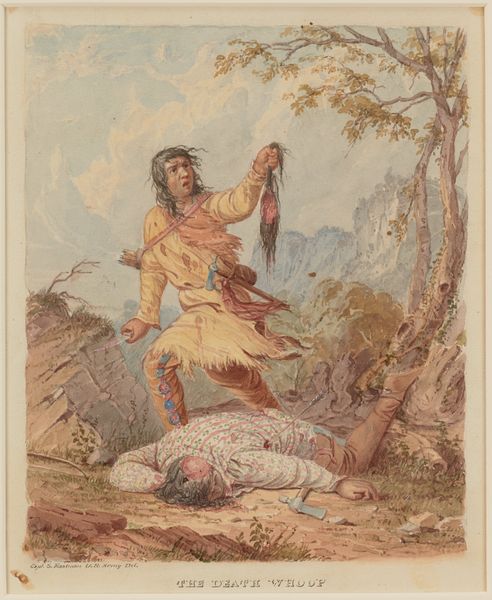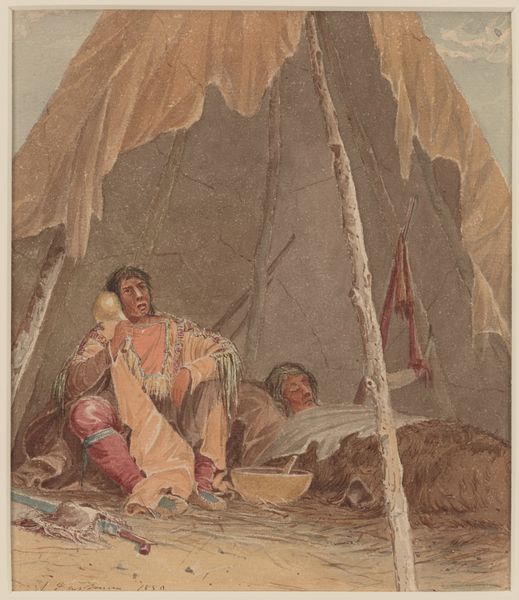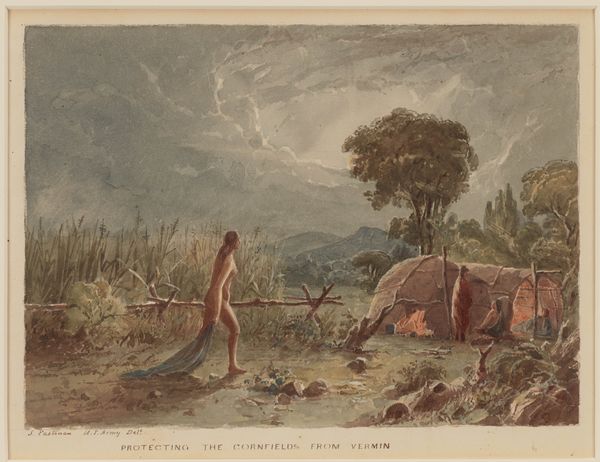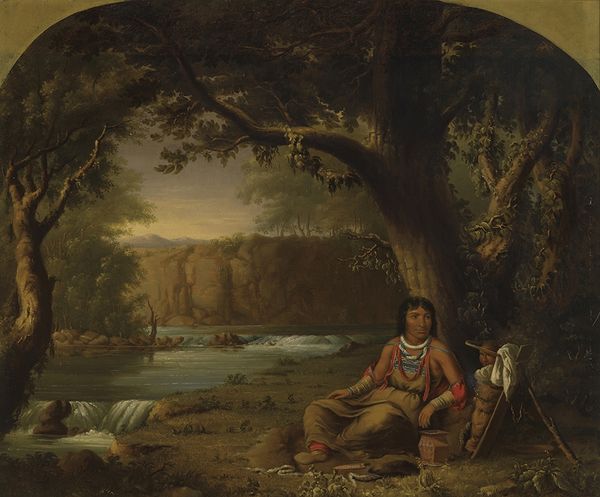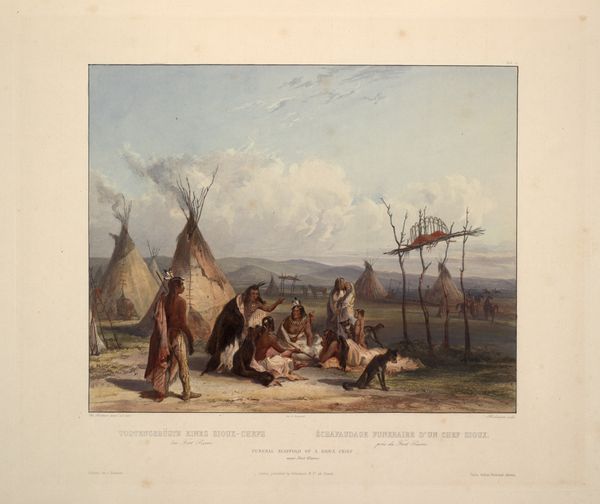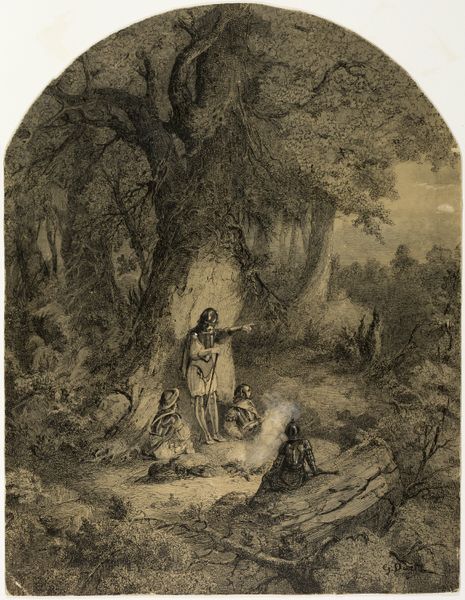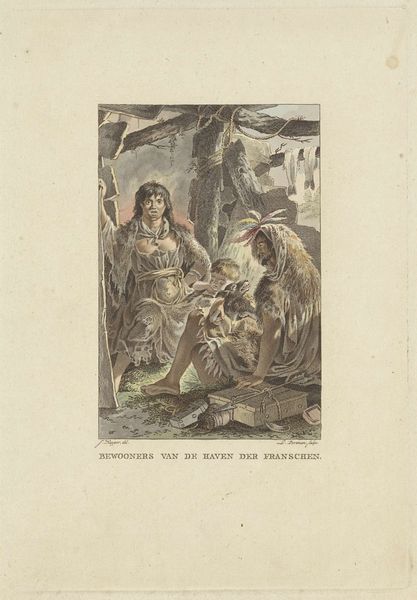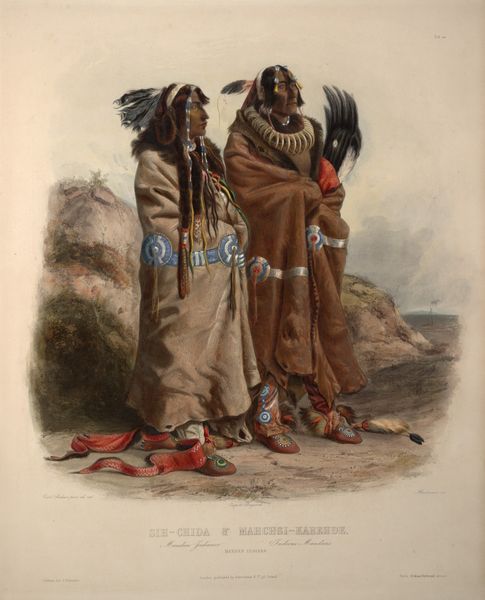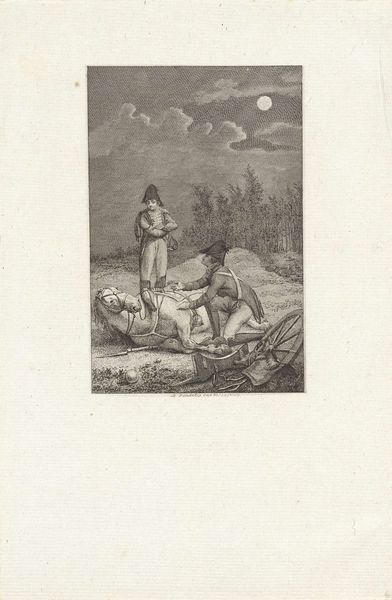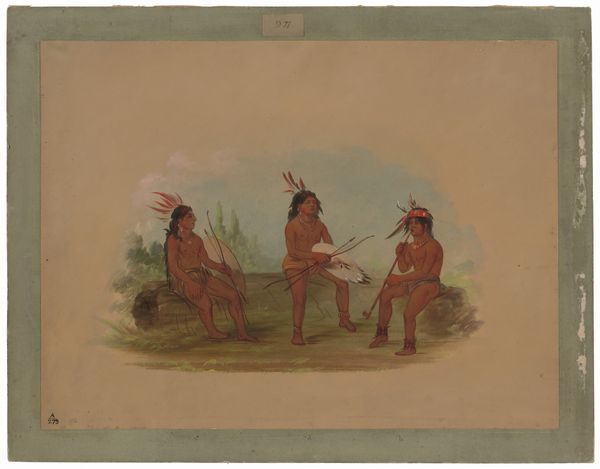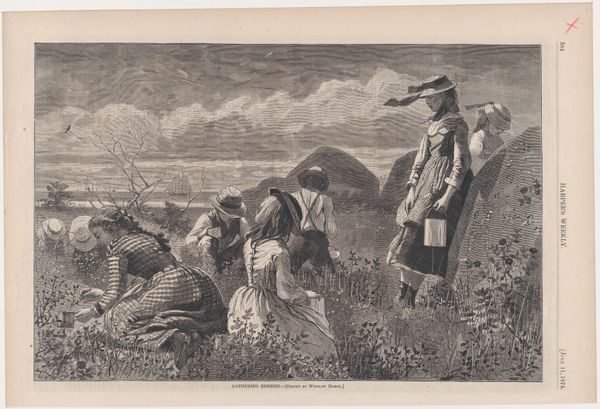
#
narrative-art
#
landscape
#
charcoal drawing
#
oil painting
#
genre-painting
#
watercolor
Dimensions: 6 1/4 × 5 1/8 in. (15.9 × 13 cm) (image)12 15/16 × 9 3/4 in. (32.9 × 24.8 cm) (sheet)21 1/2 × 17 9/16 × 1 1/8 in. (54.6 × 44.6 × 2.9 cm) (outer frame)
Copyright: Public Domain
Seth Eastman’s watercolor, Indian Courting, presents a scene rendered with delicate washes and precise linework, evoking a sense of ethnographic observation. The composition divides into distinct zones. The foreground is dominated by earthy tones and detailed depictions of foliage and objects, while the midground features figures and a teepee, and the background fades into a cloudy sky. Eastman uses a muted palette, dominated by browns, grays, and subtle blues, which imbues the scene with a melancholic atmosphere. As a U.S. Army officer, Eastman's portrayal straddles the line between documentation and interpretation. The artist’s careful attention to detail is indicative of a structuralist impulse to categorize and understand cultural practices. Yet, it also carries the weight of colonial observation. The image operates as a sign, both representing and interpreting cultural narratives within the complex dynamics of representation and power. The artwork challenges viewers to consider how cultural encounters are mediated through visual representation. The enduring power of the image lies not in fixed meanings but in its capacity to provoke ongoing interpretation.
Comments
minneapolisinstituteofart almost 2 years ago
⋮
U.S. Army Captain Seth Eastman was a trained artist who served twice on the frontier at Minnesota’s Fort Snelling, from 1830 to 1832 and again from 1841 to 1848. His extensive firsthand, peaceful encounters with Native Americans gave him extraordinary opportunities to observe their customs and practices, which he documented in his art. Most of the 35 works on paper by Eastman in Mia's collection relate to an assignment to illustrate a massive survey of Native culture by Henry Rowe Schoolcraft, but several watercolors illustrate the writings of Eastman’s second wife, Mary Henderson Eastman. Often these were interpretations of Native stories she collected during her seven-year stay at Fort Snelling. “Indian Courting” was reproduced in an 1852 publication called “The Iris,” along with Mary’s poem.
Join the conversation
Join millions of artists and users on Artera today and experience the ultimate creative platform.
